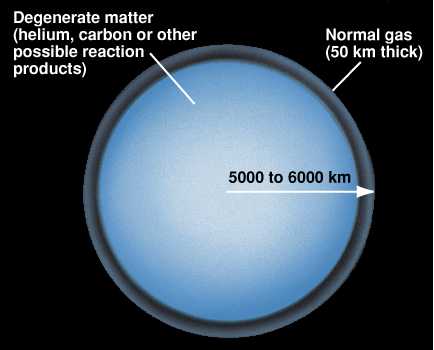
After a star has shed its planetary nebula, all that's left behind is a white dwarf.
A white dwarf is composed primarily of carbon and oxygen, held up by electron degeneracy pressure. A typical white dwarf is about the size of Earth. Also, the more massive a white dwarf is, the smaller it is! Such is the nature of degenerate matter.
The degenerate electrons in a white dwarf are moving very fast, but the laws of physics preven them from losing energy. However, the atomic nuclei (protons and neutrons) are not degenerate. Thus they can lose energy. White dwarfs shine as nuclei lose energy, radiating light away into space. No other energy is generated. Thus, white dwarfs are "retired stars," "spending their life savings."
Eventually, (after about 10 billion years) nuclei cool down. Luminosity
drops, and we're left with a black dwarf -- a cool white dwarf
which no longer shines.